
Textile materials
Nature has given us cotton, linen, wool and silk with which to create thread, while modern technology transforms wood cellulose into viscose, modal and lyocell. We love natural materials, preferably recycled and regenerative, for designing garments with a long lifespan and that continuously return to the circular economy. Reuse, recycle and repurpose – we work according to these concepts. Organic cotton jersey has been part of our assortment since the 1990s – and we are proud of this fabric!

CottonCotton is an incredibly versatile and useful fiber. It is durable, easy to wash and feels cool in warm weather.
Cotton is also comfortable on the skin, making it a natural favorite in many textiles. A distinction is made between carded cotton, which is porous and rather coarse, and combed cotton, which has a smoother surface and is less porous.
Organic cotton has been part of our assortment since the 1990s, and we were pioneers in the area. Organic cotton is grown without chemical pesticides and fertilizers. Another good alternative from an environmental perspective is recycled cotton made of scrap materials from textile production (pre-consumer waste) and from used garments and textiles (post-consumer waste). By using recycled cotton, we reduce the quantity of waste and also reduce the need to grow new cotton.
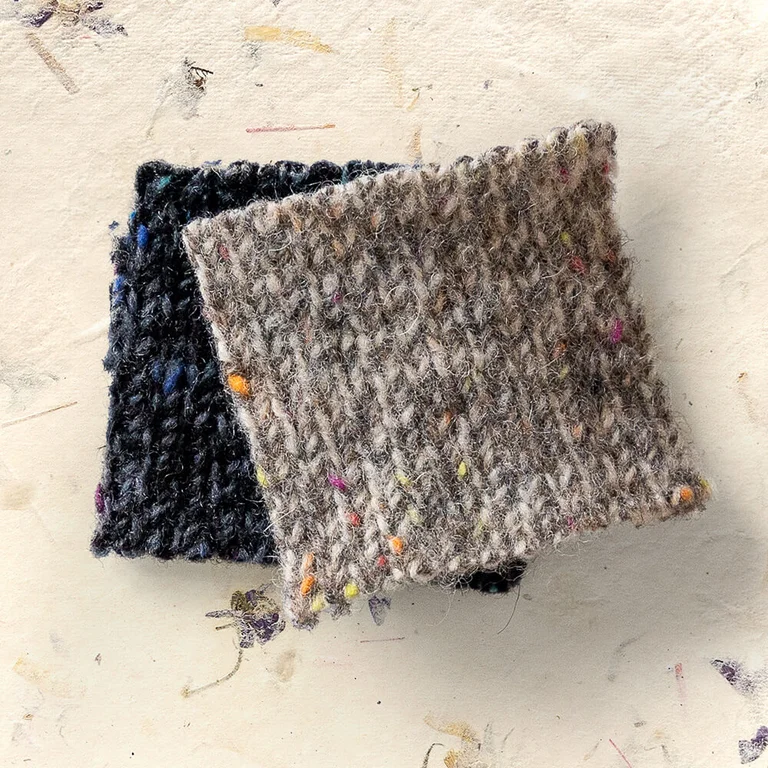
WoolWool is a biodegradable super-fiber and one of our favorite materials, because of its fantastic and unique properties.
It is warm when cold and damp, and it also has a cooling effect in summer. Wool fat, or lanolin, makes the material naturally self-cleaning and dirt-repellent. This means wool garments can be aired instead of washed, allowing you to use the garment for longer between washes.
Our wool is from mulesing-free production, which means that the painful method for preventing flystrike is not used. Wool fabric, particularly if it is soft and woolly, may pill. That is completely natural and pilling can easily be removed by hand or with a fabric shaver.
Beautiful garments in warm wool »

Merino woolfrom merino sheep, has wool fibers that are fine, naturally crimped and soft.
Our merino wool is mainly from South Africa or South America, and is mulesing-free. Mulesing is a painful practice involving merino sheep. We also use organically certified wool fiber and wool dyeing, where possible.
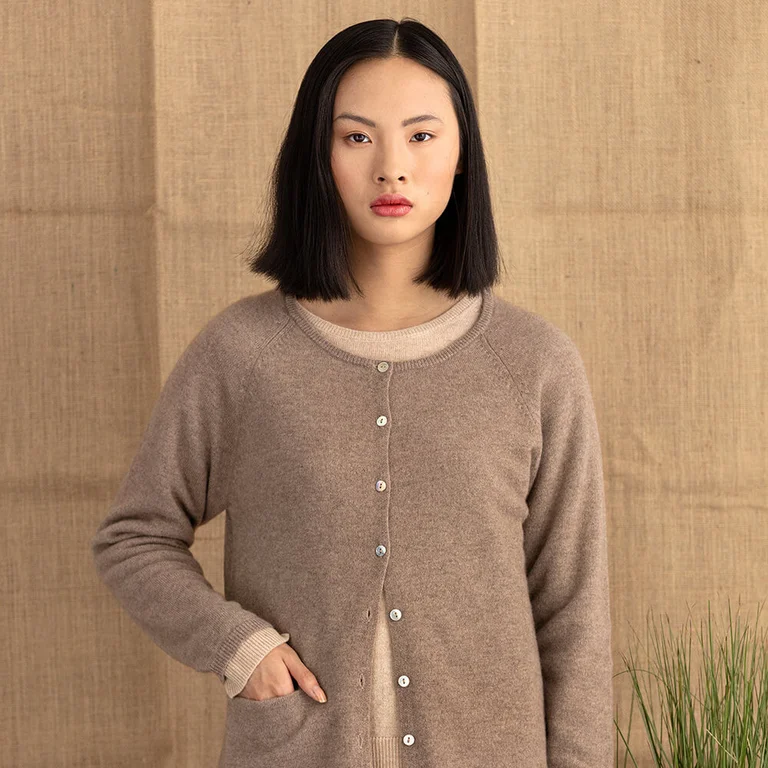
Cashmerewhich is soft and fine, is made from the undercoat fibers of domesticated goats that live in cold climates.
The name comes from the Kashmir region of northern India.
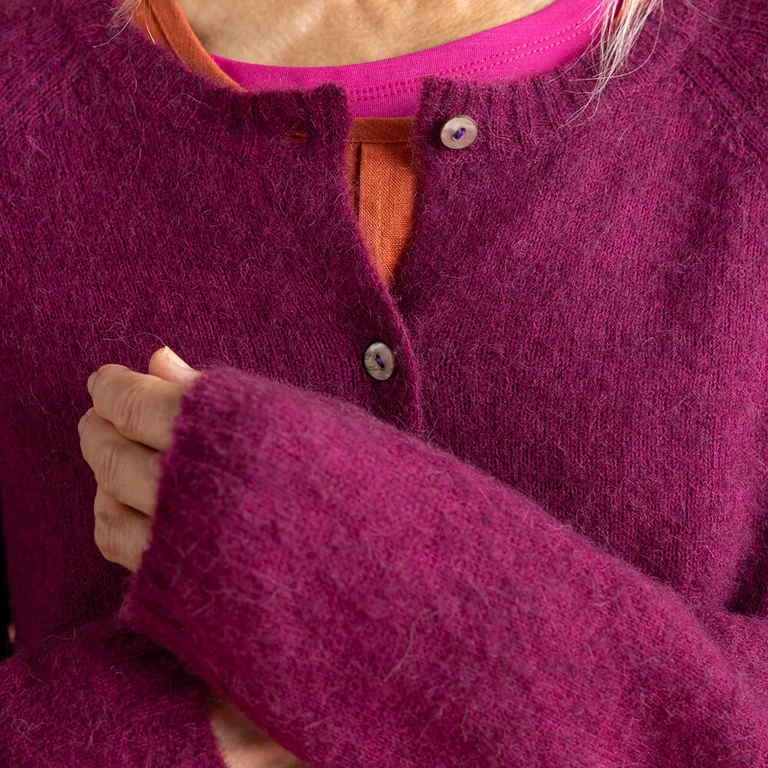
Alpaca woolis soft and fine with long fibers. It is warm and lightweight, with a natural sheen that creates a beautiful texture.
Because alpaca wool contains no lanolin, the washing process does not require large amounts of water and energy.
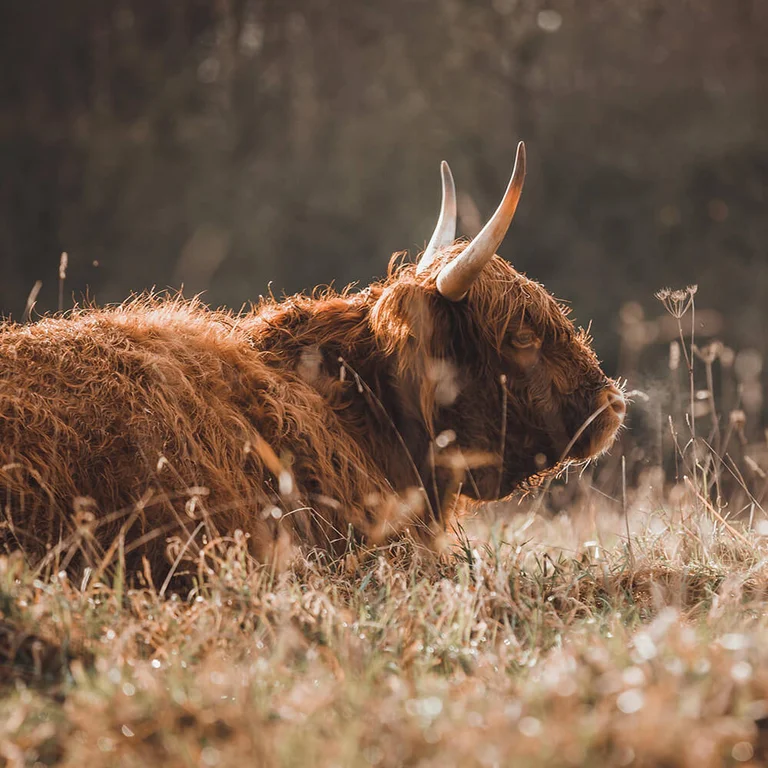
Yak woolcomes from yak, which have a long-haired coat that produces wool
that is warmer than standard sheep wool, but still lightweight, soft and smooth.

LinenLinen is a soft, cool material made from the stalk fibers of the flax plant. Historically, it has been the most used fiber for clothing in Sweden.
We use it for woven, knit and jersey garments and home textiles.
The many great properties of linen include its smooth surface, which is resistant to dirt, making it easy to clean. Linen is also durable and linen fabric has a long lifespan.
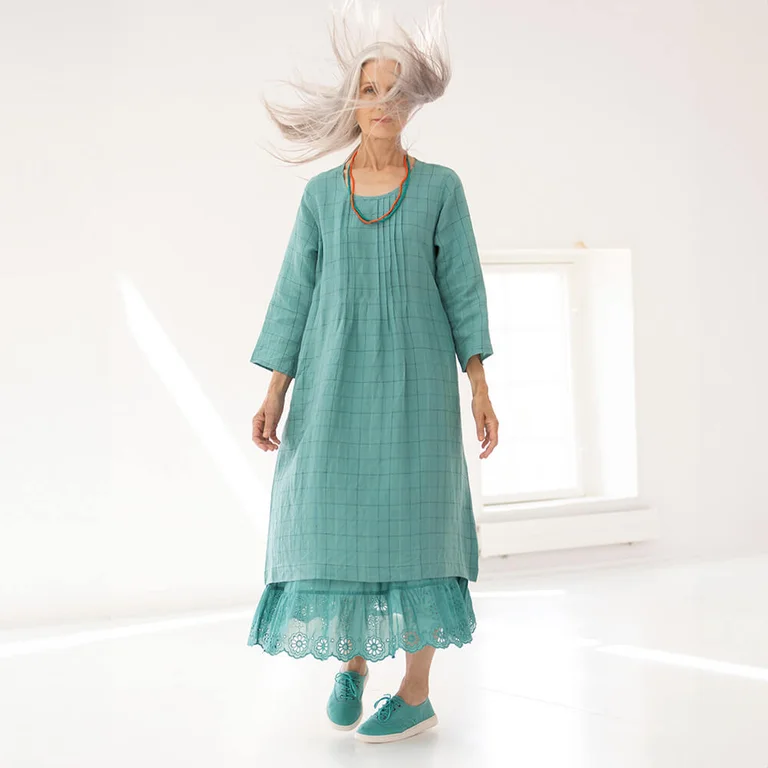
Dew-retted flaxWe preferably use dew-retted flax.
Dew-retting is an old processing method in which the flax is laid out on the ground, allowing the dew and rainfall to take care of the retting process, which is a natural process to free the fiber.

SilkSilk is made of silk fiber, spun by butterfly larvae, and which can be both cultivated and wild.
The most common kind of cultivated silk is from butterflies that eat mulberry leaves – so-called mulberry silk. Butterfly larvae spin the raw silk thread inside their cocoons, and the thread can be over 1,000 meters long! Wild silk fiber is coarser and more uneven in texture than cultivated silk, but has its own special charm.
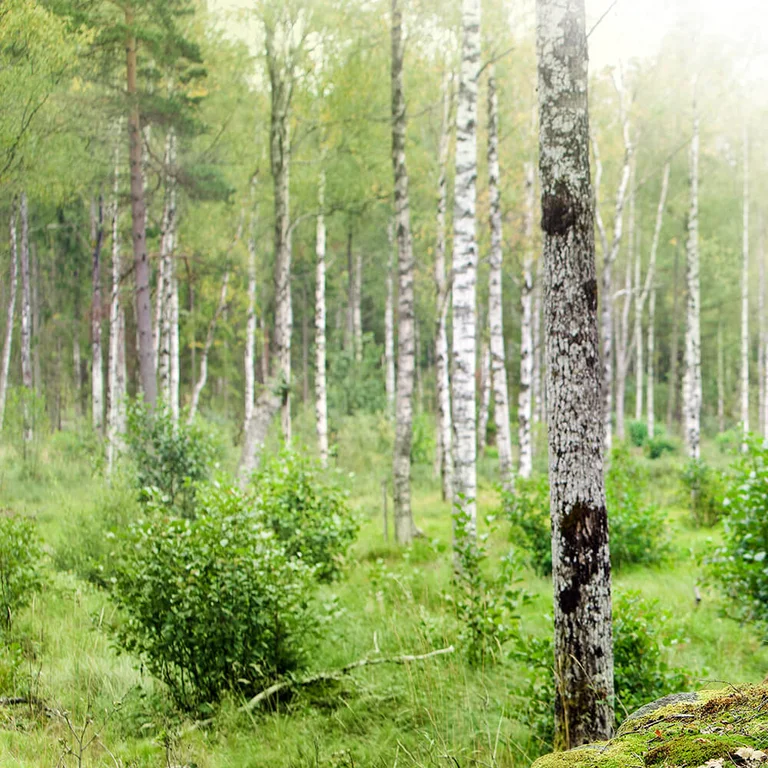
Regenerated fibersWe gladly use regenerated fibers that are made from naturally grown organic material, usually cellulose (different kinds of wood), which is dissolved and then regenerated into fibers.
We use soft and beautiful TENCEL™ Modal and TENCEL™ Lyocell, made in Lenzing’s closed-loop system, in which water and necessary chemicals are recovered and reused.
Many regenerated fibers are very soft against the skin, with properties similar to cotton. The fibers often have a beautiful sheen and a lovely drape, and wrinkle less than cotton because they are elastic. Because the fibers are straight, they are also easier to clean than cotton.
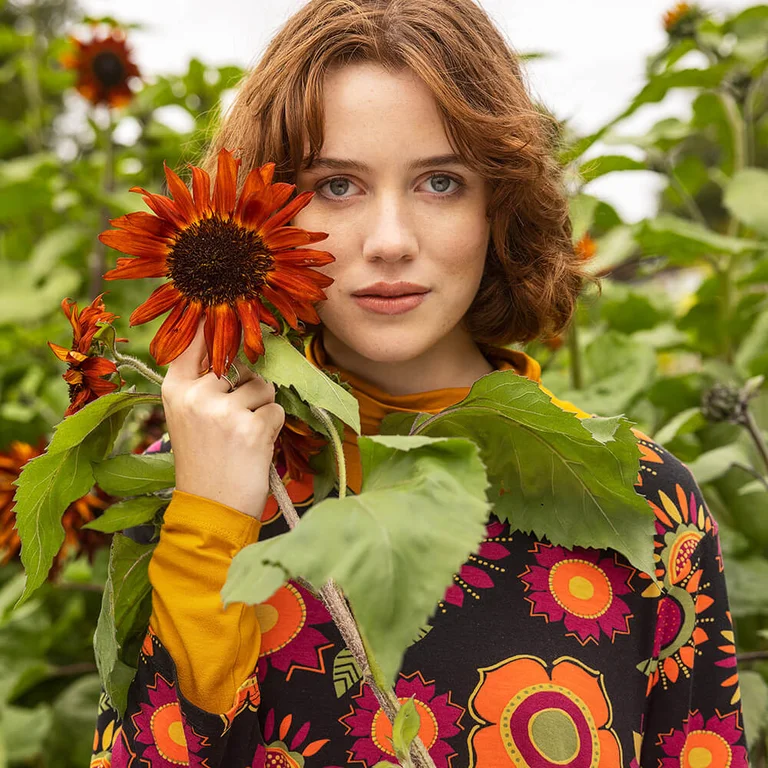
ViscoseViscose, previously called rayon, is a regenerated fiber made of cellulose from spruce or other trees.
The cellulose is turned into a pulp that is spun into different kinds of fibers. Viscose fibers have good absorption, but are sensitive and weak when wet and can wrinkle easily in the wash. Garments made of viscose are soft against the skin and have a beautiful drape.
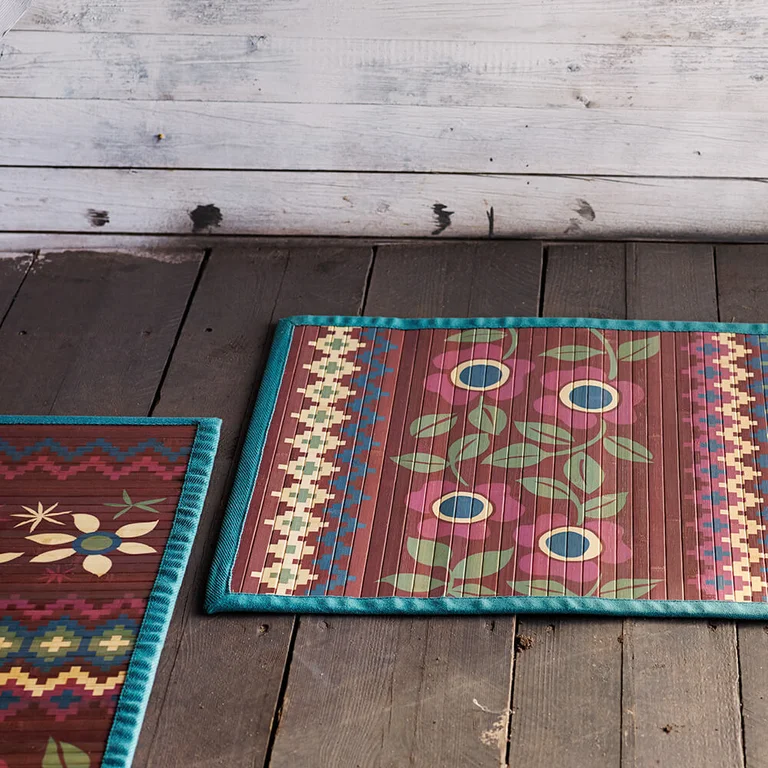
Bamboo fibresBamboo grows in tropical, sub-tropical and temperate regions of Asia and produces a good raw material.
It grows quickly in nutrient-poor soil and does not require any pesticides or artificial irrigation. The naturally durable properties of bamboo create regenerated fibers, for example bamboo viscose and bamboo lyocell. It is nice and soft against the skin.
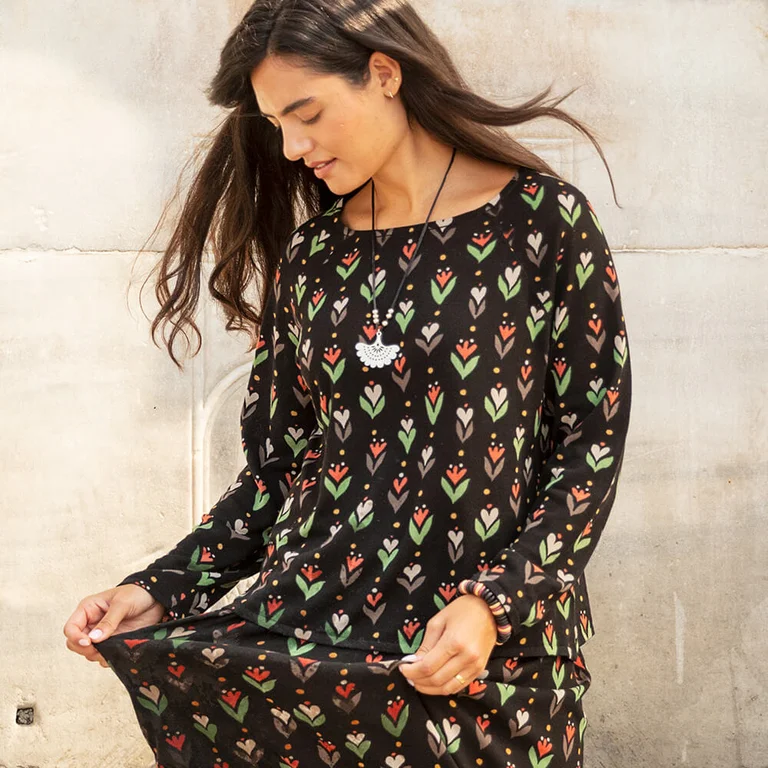
Recycled fibersFor our recycled fibers, we usually use scraps from textile production made for example of cotton, linen, wool, polyamide and polyester.
Continuous development of recycled fibers is underway on the market.
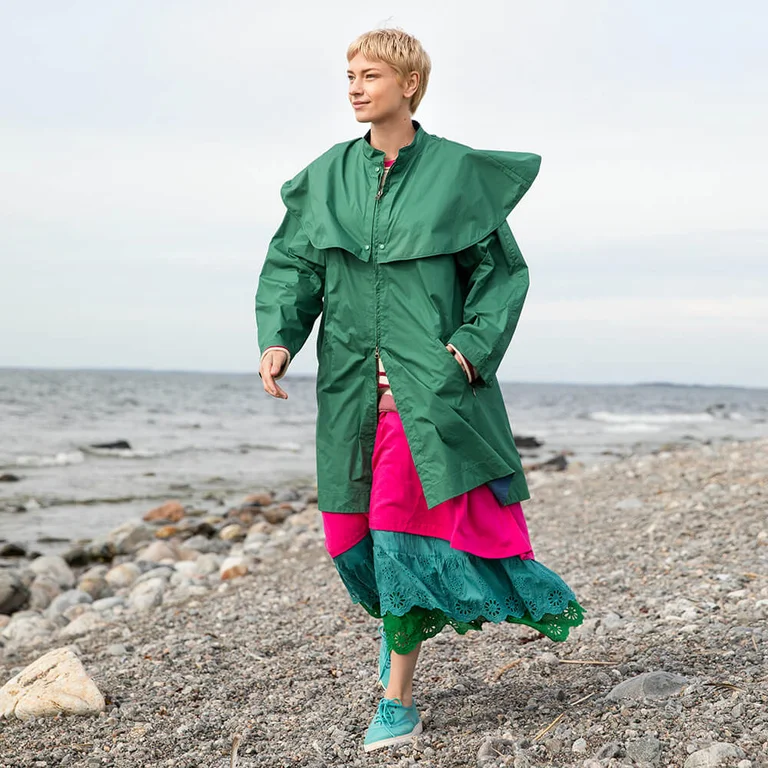
Textile finishesFor our wind-resistant garments, a fluorine-free finish is used that makes them water-repellent.
Our rainwear is finished in the same way, but also has a polyurethane coating on the inside and taped seams for full waterproofing.
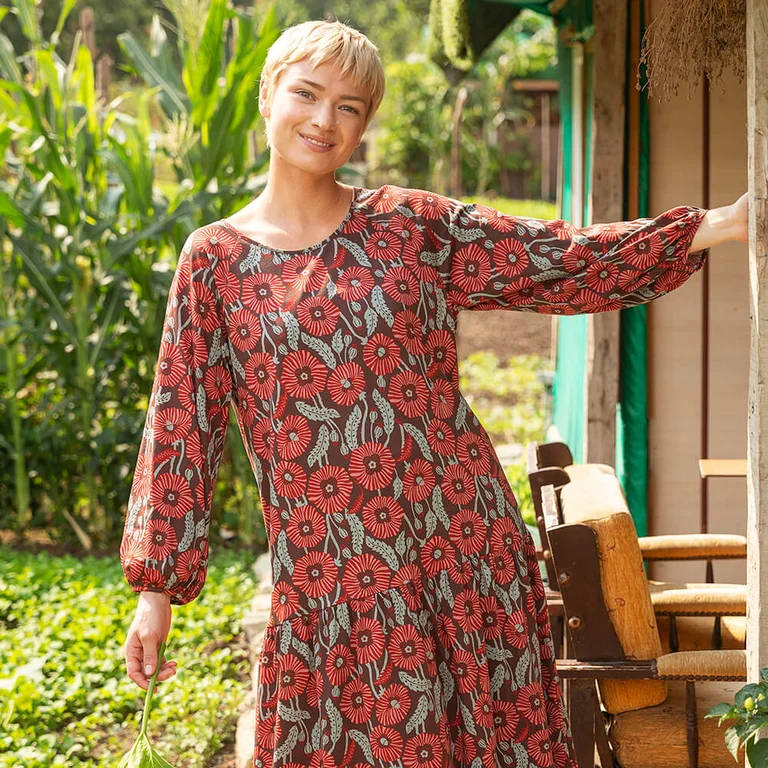
CertificationsWe set high demands for transparency and certification of the production of our organic and recycled materials.
All producers must be approved by independent certification bodies. We have certificates for materials such as cotton, linen and wool at the fiber level to processes such as dyeing, printing and the actual manufacturing. For most of our products, the entire production chain is certified – from fiber to manufacturing.
The fibers and materials for which we require a certificate are TENCEL™ Lyocell, TENCEL™ Modal, TENCEL™ Modal x Micro, LENZING™ ECOVERO™ Viscose, recycled material, organically grown and certified cotton/linen/hemp, organically certified wool, Swedish wool, RWS wool, RAS alpaca, CmiA and BCI cotton, FSC® certified wood and natural rubber. TENCEL™, LENZING™ and ECOVERO™ are trademarks of Lenzing AG.
